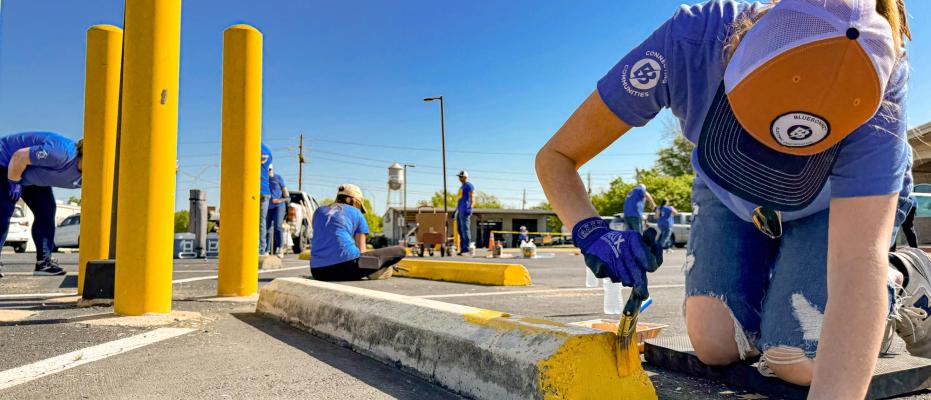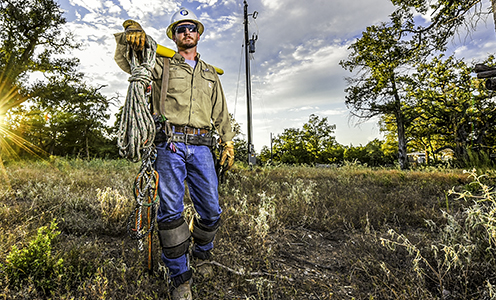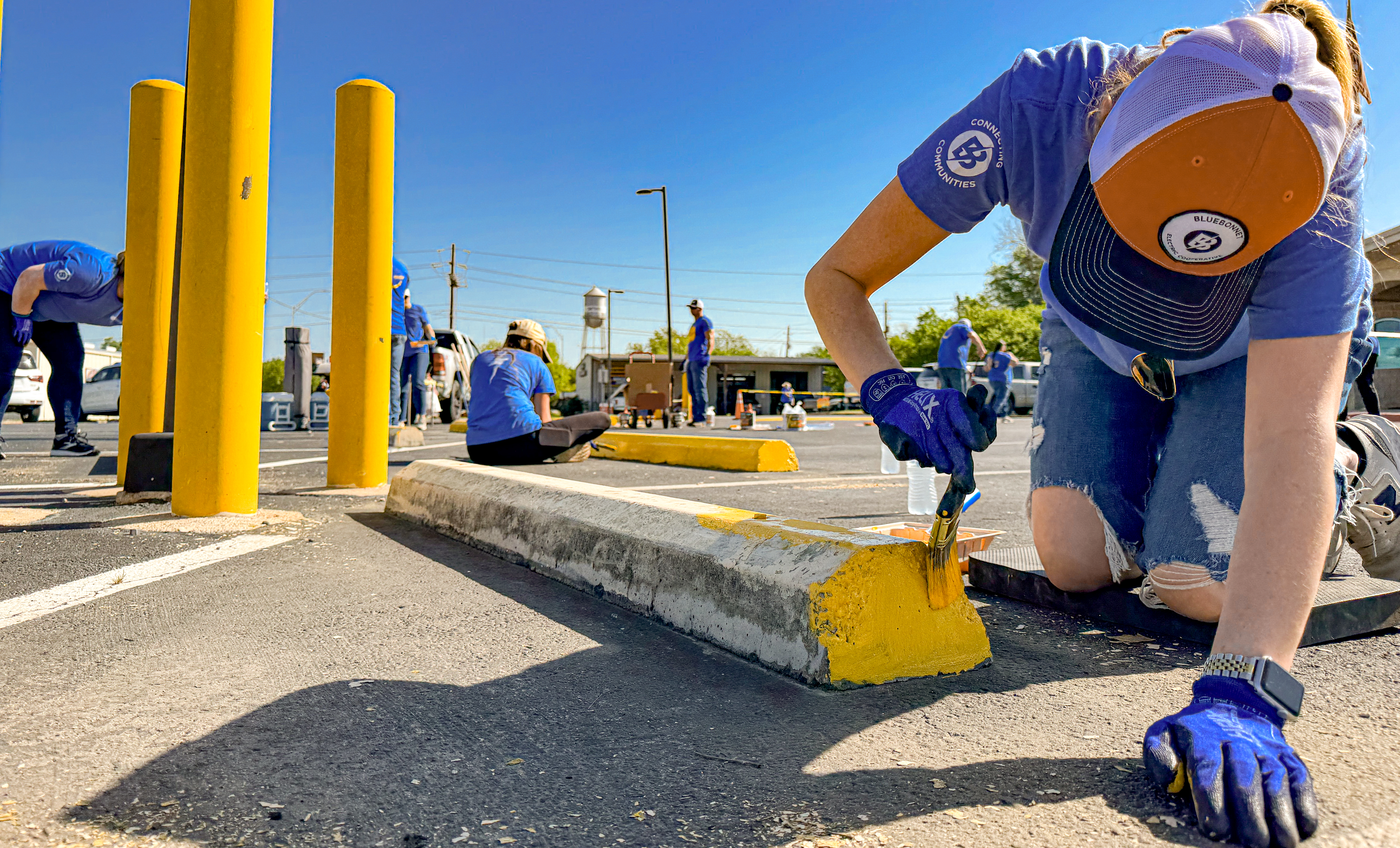We’re your neighbors
We live here. We work here. From volunteer events to storm recovery, our crews and staff are the familiar faces you see every day. Giving back to the communities we serve — it’s our shared mission.

Community news
The Tanglewood Volunteer Fire Department will purchase a new Jaws of Life set to help rescue people trapped in wrecked vehicles, thanks to a $25,000 grant from Bluebonnet Electric Cooperative and the Lower Colorado River Authority.
The Community Development Partnership Program grant, along with $6,375 in matching funds from the Tanglewood VFD, will allow the department to replace an outdated Jaws of Life set with a newer, more efficient battery-operated model.
“Our Jaws of Life unit is over 10 years old, and we’re having some problems with one of the main pumps,” said Guy Hall III, first assistant fire chief. “We've been trying to replace it with something that's more dependable and will cut down on the number of volunteers it takes to run it.”
The fire department is working to upgrade and expand the equipment it has on hand to better serve both residents in the rapidly growing area and motorists passing through on U.S. Highway 77.
“In the last five years, we've had several entrapment wrecks where we've had to pop a door and cut the car up to get victims out,” Hall said. “At least half of our call volume is vehicle wrecks, and the call volume is steadily going up.”
The department’s current Jaws of Life requires a motor-powered hydraulic pump to be set up on scene. The spreading arms weigh about 80 pounds.
“You have to pull off the pump, which takes two people unless you're the size of the Hulk, and then stretch out a hose connected to the tool,” Hall said. “Then somebody's got to start the pump, somebody's got to work the tool and then work the valve. It's a lot of steps.”
The new Jaws of Life will be battery-operated, allowing for easier maneuverability and quicker deployment in emergencies.
“There's no hoses and there's no pump,” Hall said. “There's just a battery. One person can walk, push the ‘on’ button, twist the handle and go to work. Ultimately, it’s better for our firefighters and better for the patient by getting them to the hospital quicker.”
The department’s new Jaws of Life will be transported on a firetruck purchased with the help of a previous LCRA grant.
“Sometimes you come from work to a grass fire and you’re stomping around in nice pants and a nice shirt,” Schneider said. “I’ve been a firefighter for 45 years, and there’s no telling how many boots, pants and shirts I’ve lost battling grass or brush fires. Now, we’ll have better protection for ourselves, and we always want to make sure everyone goes home safely at night.”
The community grant is one of six grants being awarded by Bluebonnet and LCRA through LCRA’s Community Development Partnership Program, which helps volunteer fire departments, local governments, emergency responders and nonprofit organizations fund capital improvement projects in LCRA’s wholesale electric, water and transmission service areas. The program is part of LCRA’s effort to give back to the communities it serves. Bluebonnet Electric Cooperative is one of LCRA’s wholesale electric customers and is a partner in the grant program.
Applications for the next round of grants will be accepted in July. More information is available at lcra.org/cdpp.
A $25,000 grant from Bluebonnet Electric Cooperative and the Lower Colorado River Authority will help the Lincoln Volunteer Fire Department provide new bunker and wildland fire gear to keep firefighters safer while responding to emergency calls.
The Community Development Partnership Program grant, along with $11,144 in matching funds from the Lincoln VFD, will pay for three sets of turnout gear that will provide optimal protection to firefighters battling structure fires. The grant also will help the department purchase 20 sets of protective outfits for use in fighting wildland fires.
“We’re very tickled that we were picked for this grant,” Lincoln VFD Fire Chief Spencer Schneider said. “It’s good to know that LCRA is there for their communities.”
Schneider said National Fire Protection Association standards require that turnout gear be retired 10 years from the date of purchase. The addition of three new sets means the Lincoln VFD will have nine NFPA-compliant turnout sets, enough to outfit its firefighters for most of the emergency situations they face in Lee County.
The Lincoln VFD provides mutual aid to other volunteer fire departments within Lee County, and the new protective gear “will enhance our firefighting capabilities with our neighboring departments,” Schneider said. “We can provide more manpower on a regular basis.”
Schneider, who is in his 10th year as Lincoln VFD fire chief, said last year the department responded to nearly 100 calls, many involving motor vehicle crashes on U.S. Highway 77 or State Highway 21. Those accidents sometimes resulted in roadside wildfires.
“Sometimes you come from work to a grass fire and you’re stomping around in nice pants and a nice shirt,” Schneider said. “I’ve been a firefighter for 45 years, and there’s no telling how many boots, pants and shirts I’ve lost battling grass or brush fires. Now, we’ll have better protection for ourselves, and we always want to make sure everyone goes home safely at night.”
The community grant is one of six grants being awarded by Bluebonnet and LCRA through LCRA’s Community Development Partnership Program, which helps volunteer fire departments, local governments, emergency responders and nonprofit organizations fund capital improvement projects in LCRA’s wholesale electric, water and transmission service areas. The program is part of LCRA’s effort to give back to the communities it serves. Bluebonnet Electric Cooperative is one of LCRA’s wholesale electric customers and is a partner in the grant program.
Applications for the next round of grants will be accepted in July. More information is available at lcra.org/cdpp.




